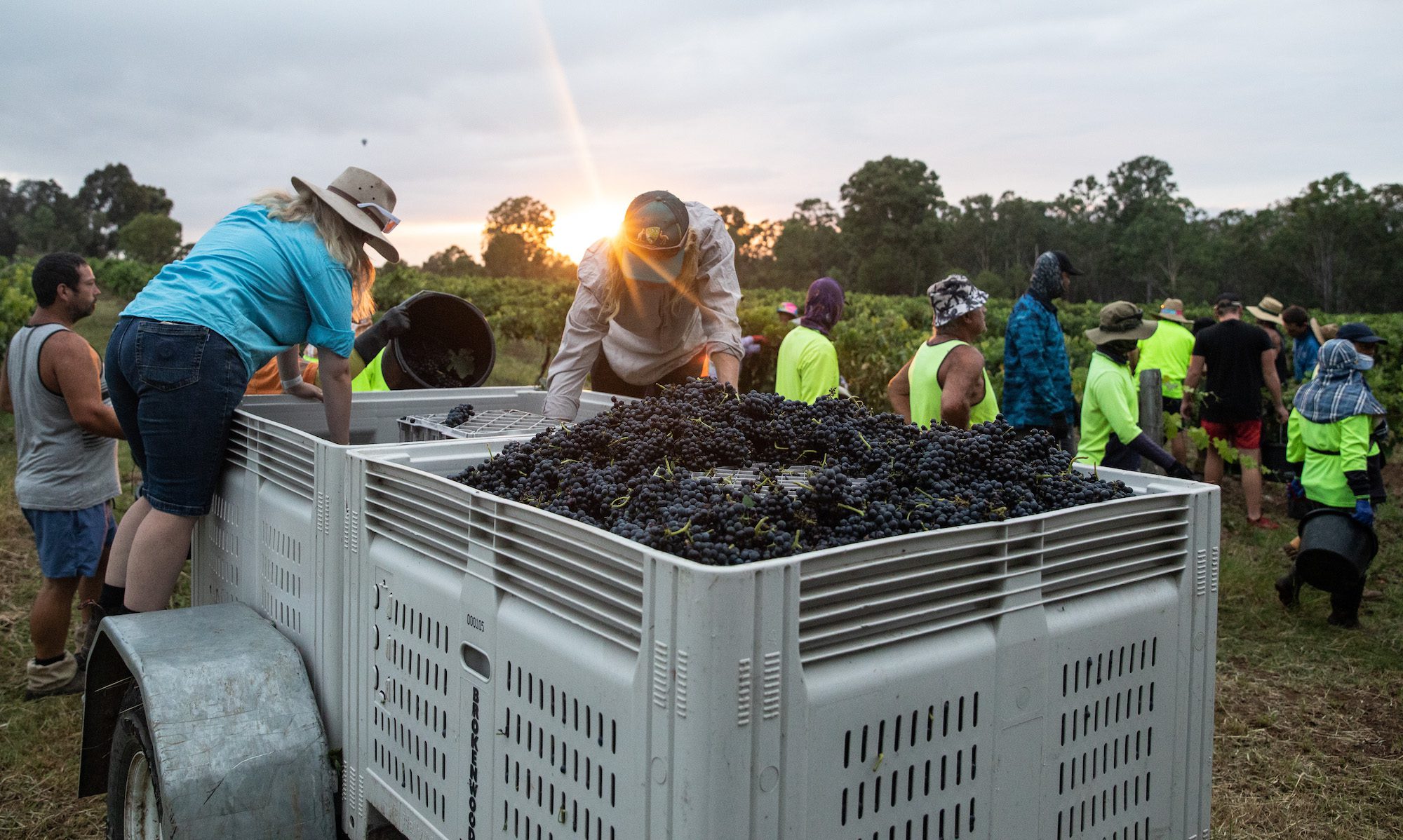
Most vintages in Australia throw up numerous challenges for growers and 2024 was no different with a spray-fest and then a lack of rain being the hallmarks. It’s small – tiny in some regions – but the end product won’t disappoint, as this region-by-region Vintage Report reveals.
Adelaide Hills
Brian Croser – Tapanappa
We all know what comes in small packages, but can they be a little bigger than the 2024 vintage from our Tiers, Piccadilly Valley and Foggy Hill Fleurieu Peninsula vineyards? At the beginning of the growing season, we anticipated harvesting 30 tonnes of Chardonnay from the Tiers Vineyard. We picked 16 tonnes on 14 March. Similarly, we anticipated harvesting 30 tonnes of Pinot Noir from our Foggy Hill Vineyard. We picked 6 tonnes on 8 March. In 2024 we planned to make wine from 550 tonnes of grapes at the Tapanappa Winery in the Piccadilly Valley. We received 250 tonnes of grapes from the total 2024 harvest. Only the Whalebone Vineyard in Wrattonbully, three hours south of Piccadilly and the Fleurieu, yielded a close to average crop.
After a slightly early budburst in early September, vine growth was normal before flowering at the end of November. The winter rains had been slightly above average and the soils were nicely full of water to support early growth. Just as flowering started, the south-easterly winds began to blow persistently and with moderate strength. These cold winds were generated in the low latitudes of the Great Southern Ocean, bringing up cold air from the fringes of Antarctica to the top edge of expansive high-pressure systems, sweeping counterclockwise along the southern coastline of Australia. These high-pressure systems were centred on the latitude of Tasmania, reflecting a positive SAM (Southern Annular Modulation), and are usually further north in the spring.
SAM was positive because the enormous column of air spinning over the South Pole into the stratosphere (the Antarctic vortex) was very strong, sucking the high-pressure systems south. The cold, strong south-easterly winds whistling across the coastal vineyards had a dire effect on the flowering process of the vines from 21 November into mid-December. The flowering period that is normally over in a week to 10 days extended for three weeks in a process painful to watch. It also rained intermittently throughout flowering and the caps that should fall off the opening flowers instead stuck to the pollen-bearing flower anthers, limiting the amount of pollen to reach the stigma, the doorway to the ovary. For the pollen that made it that far, the pollen tube growth from the stigma to the ovary was very slow because of the low temperatures and the pollen simply ran out of fuel before reaching its destination, the ovule or egg. Without pollination the ovule did not turn into a seed and without seeds the berries don’t develop – either at all or into very small ‘chickens’ (seedless berries). The small percentage of fully pollinated flowers grew into normal berries with a complement of 1-4 seeds. They are the hens of the ‘hen and chicken’ syndrome more properly called millerandage. The unfertilised berries that simply fell off the bunch are the victims of coulure.
The frustrating aspect of poor flowering in 2024 is that the positive SAM has delivered a mild, even cool, growing season as it had for the previous four vintages starting with 2020. The quality of cool, dry vintages is high, creating intense but delicate grape flavours, bright colours for reds and lively natural acids to balance moderate alcohol levels. And indeed 2024 has been cool, at average degree-day summations up to the end of March. February and March have been completely devoid of rain, so, accelerated by the low crops and a warm March, harvest was completed in perfect autumn weather in mid-March exactly one month earlier than the very cool 2023 harvest.
The implications of a very small vintage are profound. The vineyard costs as much to run with a small, average or large crop. For Foggy Hill the cost/tonne of the 6 tonnes of Pinot Noir in 2024 will be five times that for a normal crop. For Tiers Vineyard the cost/tonne of the 16 tonnes of Chardonnay will be double that of a normal crop. In the winery the great majority of the costs remain the same, be it a small crop or big crop, so the processing costs per litre of wine made in 2024 vintage will be double a normal year. I do not wish to explore these depressing arithmetic facts any further. Far from being a whinge about the bad luck of a poor flowering season by a disgruntled vigneron, my explanations of the 2024 vintage are made in a spirit of resignation and acceptance of the endless array of the random behaviours of Mother Nature. She always surprises. My preoccupation now is on the outstanding quality of the 2024 vintage and protecting and enhancing that in the winery. 2024 vintage certainly comes in a small package but it will be worth seeking out.
Picking at Paulmara. Photo credit: Dragan Radocaj.
Barossa Valley
Louisa Rose – Yalumba
After a long and late 2023 vintage, 2024 vintage proved to be quite the opposite. Despite a reasonable break at the end of the 2023 harvest, the Barossa Valley did not receive the soaking winter rains growers had hoped for. Winter was 28 percent below average rains, with 115mm (recorded at Nuriootpa), and spring was even drier with only 56mm, 48 percent of average. Luckily there were some rains in December and January, as February had no rain recorded at all. Summer rainfall was 11 percent below average, and 326.6mm of rain fell in the 2023 calendar year, 74 percent of average.
The dry winter and spring made the vines work during the early part of the growing season, and budburst started in September, three weeks earlier than the year before. September was also 3.4C above average in maximum temperature, so the vines grew fast. With dry springs come clear and cold and frosty nights, and we had some of the coldest nights in recent years, particularly in September and October. Some vineyards had significant damage that influenced their subsequent yield.
Daytime temperatures in October and November were close to average, although windy weather and a heat spike in the middle of November did cause issues with some vineyards where this was coincident with flowering, and hence fruitset. With some rain, and slightly cooler than average days, December and early January saw vines flourish and move quickly into their ripening phase. There was some risk of disease, but diligence and cooler daytime temperatures minimised the effects. Veraison in many vineyards was a month earlier than 2023. January finished with average temperatures, but in February, with no rain and the temperature 2C above average, vines ripened quickly, and harvest was away. Whites ripened quickly, retaining good fragrance and natural acids early. Reds, with small berries, show intensity and vibrancy.
February and into March remained dry, with many vineyards having more than 40 days with no recorded rainfall. The early season was a blessing for many who had already picked before an unseasonal heatwave in early March. Most varieties and vineyards were picked before Easter (end of March) with only the later ripening varieties Grenache and Mataro being harvested into April. Quality across the board looks exceptional, although yields are variable. Depending on site and variety, crops are anywhere between 50 and 90 percent of normal. Particular standouts are Grenache and Cabernet, but that’s not to take away from some exceptional parcels of Riesling, Semillon and Shiraz.
The number of Barossa vineyards and wineries participating in Sustainable Winegrowing Australia has grown significantly to 176 members (up from 146 last year). The number of growers and winemakers who are certified members of SWA grew even more significantly, from 49 to 100. Certified growers and wineries are those who have reached a ‘best practice’ standard of sustainability markers. They have also passed an audit conducted by a third party under the Freshcare standard.
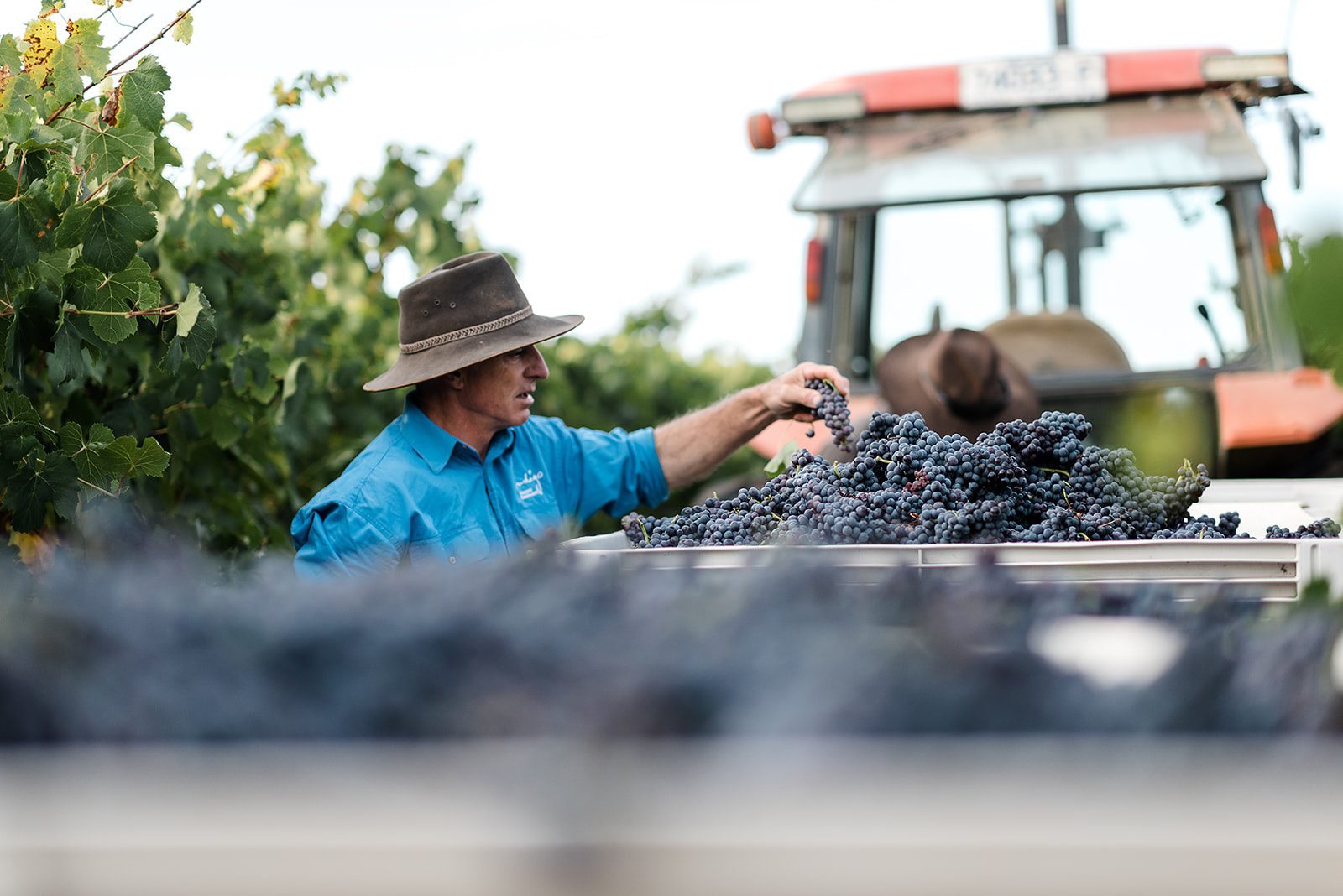
Indigo vineyard. Photo credit: Georgie James.
Beechworth
Amy Banks – Beechworth Wine Region
We had regular rain in the winter and spring (except September) and all the vines were looking in excellent health. Plenty of soil moisture has ensured shoots have filled the trellis, and some trimming for all vignerons was required. Despite all the wet weather, most managed to keep the two main diseases (powdery and downy mildew) out of the vineyards. The last few weeks (in February) the weather changed. With an absence of rain, and some warmer days, it’s allowed most Vignerons to begin harvest a little earlier than in 2023. Yields have been moderate to slightly below-average, as many had frost affect them in October. The fruit that has been picked is of exceptional quality – large, ripe bunches of all varieties. The Chardonnay, Pinot Noir, Sangiovese and Shiraz have all shown exceptional varietal expression. Ideal ripening conditions have made it incredibly pleasurable to see the big bunches (of all varieties) coming into the winery, ready to be processed. Nebbiolo is only just coming off vineyards, but it too is perfectly ripe, rich, structured and highly aromatic. Watch this space. Most are incredibly happy with the quality of the fruit coming in. A longer, slower ripening season (than in 2023), specifically in late January through February has allowed for exceptional fruit ripeness, natural acidity and varietal expression has everyone a bit excited. The only downside has been the early frost in October, slightly effecting overall yields for the region.
Canberra District
Tim Kirk – Clonakilla
After three cool and wet La Nina years and with a forecast for warmer and dryer weather off the back of a strengthening El Nino, we hoped that 2024 was going to be relatively straight forward. We started the growing season with good soil moisture following good winter rains and after a relatively mild late winter, bud burst began slightly ahead of average in mid to late September.
Two severe frosts in October did a lot of damage. Of the Clonakilla estate vineyards, around 50 percent were impacted. To make matters worse, the higher vineyards that escaped the frost produced lower than average crops, perhaps as a consequence of the cold, wet Spring the preceding year (2022) effecting low bud fruitfulness this season.
The forecast for a strong El Nino effect with hot and dry conditions never did materialise and late Spring saw significant falls of rain and generally mild conditions. The boost to the soil moisture profile was welcome given that warm weather did eventually arrive though mid-Summer into Autumn and excellent ripening conditions prevailed.
We harvested lower than average crops of excellent quality. The Shiraz looks especially intense, sporting some of the deepest colour I’ve seen with full throttle dark berry and plum fruit characters but retaining more than enough potent spice to assert our cool-climate credentials. Riesling too came in with perfect numbers (12.0 be, pHs around 3.0, 8-9 grams of acid) and a veritable road-side flower and fruit cart full of flavour. I just wish there were more of it. Canberra Riesling is running hot these days and we just can’t keep up with demand.
In short, we are looking at a vintage of low volumes but high quality with intense wines built for the long haul.
Clare
O’Leary Walker / Taylors / Jim Barry Wines
David O’Leary from O’Leary Walker says, “This year’s vintage has mirrored conditions from the 2008 harvest, featuring a cool growing season followed by slightly warmer temperatures toward the end, particularly with three to four days surpassing 35 degrees. In the Clare Valley, cool nights have always been conducive to Riesling ripening, resulting in lovely fruit character and a perfect balance between lime and citrus notes, complemented by excellent natural acidity. Most vineyards have yielded average crops, however with extremely promising qualities.
“Fermentation for both the Watervale and Polish River wines is complete, yielding exciting results. Early assessments of red wines, especially the Shiraz from 98-year-old and 105-year-old vines, show exceptional character, concentration and balance. The Winery block Shiraz is deemed the best in 23 years, with plans for gentle oak ageing to enhance complexity and refine tannins. At the close of V24 at OWW, we are seeing early signs of exceptionally well-balanced and distinctive wines across the board.”
Taylors says, “The January weather was typical for Clare Valley with pleasant conditions and slightly below-average rainfall. February continued this trend with mild weather, and notably, no rainfall was recorded for the month. This consistent weather contributed to a ‘fast vintage’, where grapes ripened quickly and uniformly, allowing us to harvest most varieties by the end of February. This year promises excellent quality wines, particularly from our white varieties. Notably 2024 marks the first vintage for Hugh Taylor, 4th generation family member, who worked as a cellar hand.”
Jim Barry Wines says, “Unexpected cool weather produced excellent fruit conditions, especially for Riesling, harvested starting in mid-February. Although red fruit yields were slightly below average, the quality was enhanced by late warm conditions allowing prolonged ripening through March and early April, promising powerful yet refined Shiraz and Cabernet.”
Photo credit: Rymill Coonawarra.
Coonawarra
Coonawarra Vignerons
The 2024 vintage in Coonawarra is unlike any other in the modern era. The growing season was set up by an El Nino influence with a warmer and drier preceding winter. This resulted in early budburst and start to the season. Then, unexpectedly, Coonawarra had cooler and wetter weather in late Spring and early Summer resulting in good shoot growth and healthy canopies. There were some minor frost events throughout Spring, but frost protection effectively mitigated fruit and vine damage. This cold wet weather in November and December, throughout flowering and fruitset resulted in low to moderate yields.
The early onset of an incredibly strong Bonney Upwelling off the Limestone Coast (a local oceanographic phenomenon that drops ocean surface temperature considerably and restrains temperatures across the region) moderated the weather and had a particular impact on the night temperature through December and well into the New Year. With the New Year came changing weather patterns. Warm and dry conditions with cool nights were optimal for quality in the ripening phase.
Coonawarra experienced mild to warm and dry conditions, punctuated with bursts of heat leading into harvest, without any unwanted rain. Vintage was slightly earlier than average with the majority of reds harvested throughout late March and April. Vintage 2024 points to another exceptionally good vintage with lovely firm acidity in the whites and a strong red wine vintage. Very intense colours, bold tannins and depth of varietal fruit flavours are early indicators of a vintage of the highest quality, translating into wines that have excellent cellaring potential.
Eden Valley
Henschke says, “Significant early rainfall followed by a dry spring created challenging yet rewarding conditions. A focus on canopy health was critical, with grapes achieving optimal maturity. The resulting wines, particularly Rieslings, showcase intense primary fruit flavours and stunning acidity, with Shiraz and Grenache also standing out for their vibrant fruit and tannin ripeness.”
Yalumba says, “The season commenced with warm days and cool nights, which were ideal for developing pristine aromatics and beautiful natural acidity in our white wines, especially Viognier. As the season advanced, the conditions favoured excellent flavour and tannin development in our red wines. Grenache and Shiraz are particularly noteworthy, with the former displaying a lovely elegance and the latter a robust concentration and depth. While Cabernet Sauvignon has had another standout year and promises to make some wines of great structure and longevity.”
Grampians
After bracing ourselves for an El Nino season the tables were turned with persistent rain and cool conditions through much of the growing season. Thankfully it was not as wet as last season, so most growers had good ground access for crop protection sprays and the regular dry breaks in the weather ensured that disease pressure was manageable. There were no frost or hail events of any significance but fruitset was variable for some vineyards, however, in the main growers had average or above average yields which was welcome after a series of low yielding vintages.
The season changed dramatically in February with the beginning of a very dry spell and much warmer weather. We recorded 12 days above 30C in February and 10 days above 30C in March. Although this was a stark change in weather, minimum temperatures remained cool and all varieties were able to achieve a balanced physiological ripeness at harvest. The season which produced solid crops also gave us strong canopies helping the vines cope with the suddenly dry conditions and series of minor heat waves that were experienced in late February and through March. Unfortunately there were two separate but extreme bushfire events in the region that caused significant damage to several homes as well surrounding bushland, however, they were of short duration and the prevailing winds were such that smoke taint did not present any challenges to the vintage. In fact, there is great optimism for the wines of vintage 2024 with the mix of conditions allowing for full ripeness while maintaining excellent acid balance in the fruit.
Hunter Valley
Stuart Hordern – Brokenwood
2023 was a much drier year than the previous three across eastern Australia. Up to 31 December 2023 we received 663mm of rainfall, almost 100mm below our long-term average of 754mm. We had a very dry May through October, with only 127mm falling across these six months. This low rainfall and a warmer-than-average winter resulted in an early budburst, and irrigation was needed to get the vines off to a good start. A run of 11 days over 30˚C in mid-September with westerly winds impacted flowering, resulting in smaller bunch sizes, especially in Semillon.
We returned to average rainfall for November and December with some patchy hail events on the evening of 29 November, which impacted some sites in southern Pokolbin. Thankfully it was localised and our red vineyards were not impacted. Subsequent dry weather meant the damaged fruit mostly dried up, with little impact on quality. Despite several well-publicised storms that hit the Hunter Valley on Christmas Day and Boxing Day, we escaped relatively unscathed, which was a relief. Coming into the new year, fruit condition and canopy were very good, though tracking 14-21 days earlier than last year due to the lighter crop. Early January was incredibly hot and humid. We picked our first Chardonnay on 12 January, and while it was early, it was not one for the record books. Semillon followed shortly after that. While yields are low, the quality is excellent, and the flavour and chemistry are good. The last of our Semillon was picked by Australia Day. To give some context, we started on Chardonnay on 31 January in 2023.
Across the Hunter, yields across all varieties were lower than average. Semillon was particularly impacted, with the preceding three wet winters (2020, 21 and 22) and a historically dry 2023 winter all taking their toll on vine health and yield. We received a welcome run of warm, dry weather towards the second half of January, consequently our Shiraz came on quite quickly. This was due to a combination of this late January heat and smaller yields due to the dry winter. Considering the late heat, our Shiraz came in with good ripeness and natural chemistry. Despite the low yields across the valley, our reds held up better than the whites, yields on our better blocks actually being higher than in 2023. The last of our Hunter Shiraz was harvested on 5 February, the earliest I have finished harvest in the Hunter. The incredibly compact Hunter harvest made for a real baptism of fire for the vintage cru, with almost the entire harvest completed in an intense three-week period.
King Valley
A wet spring led to a mild, sunny vintage period, concluding before Easter. While yield was slightly below the long-term average, the quality of both white and red wines excelled, with robust flavours and acidity promising a year of outstanding wines. Crop levels for King Valley are slightly low but yields are of very good quality. Should be a year for some great wines.
Langhorne Creek
Paul Hotker – Bleasdale Vineyards
Early and late winter rainfall was above average (with a dry July) and a few riverside vineyards also received a small flood, giving the soil a good soak. September and October were very dry and a few growers suffered minor frost damage and crop losses. An early but windy and cool extended flowering period in October challenged berry set and uniformity. This was followed soon after by a particularly wet November, December and January. This was good for vines that had achieved berry set but sent many vines into a vegetative cycle with bunch shatter and further crop losses.
The mild summer was great for vine development and maintaining acidity, with a few warm periods in February pushing vines towards a focus on ripening fruit. Generally, yields were moderate and below average due to the poor flowering period, despite the rainfall that followed flowering. The larger canopy growth from additional rainfall kept fruit out of the sun and reduced levels of sunburn whilst maintaining acidity and aromatic compounds… That is up until the Adelaide Cup weekend from the 8-11 March, when we experienced four hot days: 34.9, 40.4, 39.6 and 39.9° with above average night temperatures in the low 20s.
The February harvest of Verdelho started as forecast on 8 February, with Adelaide Hills whites following soon after. The Adelaide Hills crops being more affected by the poor flowering conditions, with high leaf-to-fruit ratios and low crops racing the ripening quickly, we had largely finished the Hills harvest before 1 March, when we commenced local reds; starting with some of our better Shiraz, Malbec and Cabernet Franc. Harvest continued rapidly up until 8 March when we battened down to ride out the heat mentioned above. This period put vines, people and ferments under pressure and I spent the weekend nursing our refrigeration plant and ferments through; overextraction and pasteurisation of ferments from excess heat was my greatest concern but consistent monitoring, adaptation, overnight pressing and hard work maintained quality.
Crop losses of up to 15-25 percent were suffered as a result of the heat through reduction of berry weight but with some rapid work, we finalised the last of our harvest over the next 10 days completing with Petit Verdot, Cabernet Sauvignon and Malbec on 21 March. Vintage on a pin; short, sharp and (very) shiny. All vintages have their challenges and not all are predictable, I thought there was a risk of March heat as the vintage felt a bit like 2008 and 2015 in the lead-up. As we are finishing ferments and as per those years, I think wine quality will be excellent, and possibly sharing some similarities with 2015 and 2016, which I have been enjoying at home. The standout varieties at this stage appear to be Shiraz, Grenache (and blends) and Cabernet (and blends!) also very good along with some excellent Malbec. Chardonnay and Sauvignon Blanc are probably the best from the Hills despite the low crops.
McLaren Vale
McLaren Vale Grape Wine & Tourism Association
The growing season began in October and November with modest rainfall and a good mix of warm sunny days. December however saw considerable rainfall, with December and January’s combined rainfall approximately ten times more than the same time in 2022/23. In a complete turnaround, the end of summer into autumn was very dry, and McLaren Vale experienced 46 straight days without rain from 26 January, including a heatwave in February of four consecutive days at or above 37ºc. For some parts of the wine region the heatwave will be a defining factor of vintage 2024, but for others it will not. McLaren Vale has an extremely diverse landscape so climatic conditions influence each vineyard differently depending on factors such as the geology, soil and microclimates of individual vineyards as well as the grape variety that is planted.
The dry weather conditions and heat in February led to vintage compression with many of McLaren Vale’s wineries working at maximum capacity from late February right through to the end of March. After an intense period, there was some breathing room as the wineries waited for the later ripening varieties to reach optimal sugar and phenolic ripeness. Generally, the yields of most varieties in our region were below the long term average. White grape varieties such as Fiano and Viognier did well with the climatic conditions of vintage 2024 providing good natural acidity in these varieties. Climate appropriate varieties including Nero d’Avola delivered well this vintage with the late burst of heat in February enhancing the flavour profiles in these varieties.
Winemaker Alan Varney says, “I recall sitting at Sellicks in January watching yet another downpour with a sense of dread as to what may lie ahead for vintage. Luckily that was the last rain we would see and the weather turned it on for us. The winery is now full and ferments are all looking promising. Most exciting is a batch of Arinto. Grenache is also a standout with great depth and spice. I’m even looking forward to a day off soon!”
d’Arenberg says, “A wet winter followed by a dry spring set the stage for a challenging but successful harvest. Early varieties like Chardonnay and Sauvignon Blanc avoided a later heatwave, maintaining strong varietal character and acidity. Yields were generally lower although Grenache bucked the trend with a good crop, and other contemporary varieties thrived under these conditions. with Cabernet Sauvignons notable stand out.”
Margaret River
Amanda Whiteland – Margaret River Wine Association
Vintage in Margaret River was early, fast-paced and bodes well for some superb-quality wines. The vintage was also blessed with one of the most spectacular and abundant marri (Corymbia calophylla) flowering seasons, keeping the birds away from the vineyards. Howard Park group viticulturist Stephen Kirby explained that the cool, wet 2023 winter weather disappeared quickly and was replaced by a dry, warm spring. “Above-average temperatures and almost no rainfall led to an early budburst and perfect growing conditions for vines,” he says. “Canopy growth was good, and flowering occurred early and went through quickly. This led to good berry set in most varieties. The spring weather meant disease pressure was low, and very few reports of issues were seen in the vineyard. Consistent above-average temperatures led to early veraison in all varieties. In late December, colour could be seen in Cabernet Sauvignon and Shiraz, which pointed to a very early vintage. January saw a continuation of the dry conditions, leading to moderate bunch size and lower-than-expected yield potential.”
A positive of the warm, dry conditions was no disease pressure across the region; 2024 was also a vintage with abundant and prolonged marri blossom, known as a ‘mast year’. This usually occurs every four years or so, as it takes the trees time to muster sufficient resources to produce another massive flowering. This also means there was little to no grape loss due to the native silvereye birds. The white grape harvest began in mid-January, four weeks earlier than usual and continued to ripen rapidly, making vintage compressed and fast-paced. As with all seasons, early attention to detail in the vineyard paid dividends. For irrigated vineyards, the dry growing season required early and frequent irrigation, increasing pressure on water supplies; however, early picking somewhat alleviated this.
Precision in harvest timing was crucial in this hot, fast-ripening season, as the optimal ripeness came and went quickly. Whites were generally picked over two weeks instead of the typical four weeks. Red varieties required careful consideration to ensure physiological maturity with vibrancy of fruit expression. The narrow windows of opportunity to harvest meant skilful scheduling of vineyard and winery teams, supported by harvesters and transport contractors, and long days of handpicking for backpackers and seasonal workers.
All varieties reached full maturity earlier than we are used to, and lower yields in some varieties and locations led to a concentration of aromas and flavours. This bodes well for some superb quality wines from 2024. Overall, early estimations of the region’s yields are approximately eight percent down on last year and two percent down on the previous five-year average. Andy Bretherton, head winemaker of Juniper and Higher Plane, says, “From a wine quality perspective, I always struggle with the idea of making definitive calls on vintage this early in the season; it is just too early to truly know, but I can say the potential in many parcels is very exciting. The whites have exceeded my expectations with their clarity, freshness, and surprisingly, their natural acidity – a true strength of ‘Margs’ even in warm years. Cabernet, I would say has been more challenging and required real rigour in vineyard and winery to get the best results, but the best sites show lovely perfume and varietal expression, and trademark fine tannin. There will be some special wines from this vintage.”
Howard Park added, “Consistently warm and dry weather has led to ideal ripening conditions for V24. Margaret River has experienced above average maximum temperatures but no heat spikes, so vines were functioning at full capacity, which has led to one of the earliest vintages in recent history. Moderate yields enhanced quality, ensuring wines with great strength and balance from this region.”
 Mornington Peninsula
Mornington Peninsula
Olivia Barrie – Mornington Peninsula Wine
The 2024 vintage began with a relatively benign season from September to November, characterised by stable weather and persistent cloud cover, which moderated evening temperatures. However, December and January presented significant challenges with heavy rainfall, reaching up to 70mm, during the critical two-week flowering period. Vineyards situated downhill fared better initially, while those uphill faced a tough season marked by wet and humid conditions, leading to widespread downy mildew and unusually, small patches of bacterial inflorescence necrosis.
Particularly, vineyards at higher elevations around Main Ridge suffered significant yield losses due to these compounding pressures. However, regions like Tuerong, Balnarring, Moorooduc, and lower, more northerly vineyards managed to maintain good yields and concentration. Following the challenging period in December and January, there was a seven-week stretch without rain, commencing at veraison. This prolonged dry spell, coupled with two significant heat events, resulted in high levels of titratable acidity (TA) and pH, rewarding winemakers with a deft hand.
Despite the heat events, which accelerated ripening and compressed the vintage into a shorter, more intense period, little crop damage was reported. This pressure to expedite harvest contributed to exceptional colour, intensity and pleasing flavour profiles. Harvest occurred approximately two weeks earlier than usual, around 16 February, compared to the typical start date of 1 March. Chardonnay is looking especially smart with Pinot Noir adding layers and complexity to the vintage. Other red varietals are progressing at their usual pace, with expectations of being in tanks by mid-April.
Overall, wineries with vineyards spread across the region experienced mitigated risk, highlighting the importance of diversification in managing vintage and climate challenges.
Nagambie Lakes
A dry winter and subsequent heavy rainfall created high disease pressure before heavy rainfall in early January resulted in flooding from the Goulburn River to some of the estate’s lower lying vineyards. Thankfully this did not impede a successful harvest and one of the earliest recorded finishes since 1931. While overall yields were down, the quality of Grenache, Marsanne and Viognier was very good, with Shiraz potentially having an exceptional year.
Orange
Orange Region Vignerons’ Association
“One to remember”, “world-class” and “a classic vintage”. These are the winemakers’ reactions to the 2024 vintage in Orange. The region experienced a quintessential cool climate season, with winemakers and grapegrowers alike excited about the prospects of the 2024 wines. From the lower vineyards around 600 metres to the higher elevations at 1,000 metres, all varieties ripened beautifully, producing flawless fruit.
While ripening well, it was an early vintage which began in late January, with most vineyards completing harvest before the Easter long weekend. The dryer winter leading into spring of 2023 allowed a great start to vintage with a strong and consistent budburst across all varieties. The rainfall was below average for most of spring, except for November which set up a perfect season, with ideal soil moisture profiles.
Temperatures during spring saw a higher-than-average mean, giving the vines textbook growth and fruitset. However, the spring maximum temperatures remained under 30 degrees, with long sunshine hours, reflective of the best vintages of Orange. The region experienced no disease, flawless phenological ripeness with lower sugar levels and exceptional acid retention.
“November was quite wet so there was no shortage of water to limit the vines growth,” says Colmar Estate owner Bill Shrapnel. “Summer was warm but not particularly hot, just the way vines like it. Our vineyard, which sits at an elevation of 980 metres, is set up so we can irrigate if the vines start to suffer in hot conditions, but there was no need this year.”
Chardonnay, Pinot Noir and Riesling have excelled. Bill says, “We conducted three picks of our Chardonnay, trying to capture both the citrusy notes (early pick) and white peach characters (later pick) that Chardonnay has to offer. That said, our Riesling was right on the money, with full ripeness in both the Pinot Gris and Gewurztraminer. Exciting prospects all round.”
Byrne Farm winemaker and owner Jeff Byrne says 2024 will be remembered as a classic vintage. “For the first time since 2020 we enjoyed multiple days over 30 degrees during January and February, which led to one of the earliest harvests on record and a short and sharp vintage in our winery,” he says. “These ideal conditions helped return the vines back to an average crop load for 2024. The wines are showing loads of flavour with ideal ripeness across the varieties, while still holding a lovely line of acidity – very exciting. I look forward to trying and collecting the region’s 2024 wines.”
Nick Segger, president of Orange Region Vignerons’ Association and owner of Nashdale Lane Wines says, “With an excellent yield across the region, the early assessment is that there are standout wines across the spectrum; from the whites such as Riesling, Pinot Gris and Chardonnay through to the broad range of reds including Pinot Noir, Shiraz and Cabernet. It will be a vintage to remember for all the right reasons. There will be some world class wines from Orange this vintage.”
Porongurup – Great Southern
Rob Diletti – Castle Rock Estate
The 2024 vintage was definitely one of the earliest vintages the region has experienced. A wet June topped up our dams and meant we started the season in good shape. This turned out to be very, very important as the season progressed. From the beginning of September 2023 to the end of April 2024, there was a total of 162mm of rain – 116mm of that fell before the new year, with 46mm from January to the end of April. Apart from two days topping 40 degrees, there was not sustained excessive heat, but it was still a warm year.
We maintained good vine health and adequate leaf cover through well managed irrigation, as well as altering our canopy management regime to suit the warmer and dryer weather conditions. Vintage started nearly four weeks earlier than last year, and was certainly very frantic. That said we are extremely pleased and proud of the wines that we produced.
This was achieved by maintaining our irrigation throughout harvest, careful monitoring of the vines as well as the grapes, and picking immediately when needed. Having our own harvester again proved to be critical in this process, enabling us to pick the grapes at optimal ripeness and delivering them to the winery immediately. As always the stand-out wines from the Porongurups are Pinot Noir and Riesling, highlighting our unique site’s suitability for these varieties. Since the beginning of May the region has experienced 30mm of rain, providing hope of a wet winter to restore soil moisture and water reserves.
Rutherglen
Despite early frost challenges, our vines recovered well, producing a balanced crop and yields above forecast. Innovations this year included experimenting with alternate white varieties and whole bunch ferments, adding excitement to our winery’s bustling activity. Our 60s Block red and white varieties, especially Shiraz, are showing promising depth and flavour.
Swan Valley
John Griffiths – Faber Vineyard
What a season! The winter rain in 2023 was 297mm – the long-term average is 425mm. The spring rain was 97.2mm – the long-term average is 141mm. That is only 70 percent of the long-term average. It was hot and dry with consistent hot easterly winds from mid-spring. There was a consistent cycle of multi-day heat spells from mid-September. It was an extremely warm spring and extremely hot summer, both well above average. Vine growth was limited by the lack of late winter and mid-spring rains, leading to smaller canopies. Soil profiles dried out very early from the combination of a lack of rain as well as the heat and wind. Disease pressure was virtually nil from the end of September.
Flowering, veraison and ripening all occurred very early and indications were that vintage would be two to three weeks early. In the end it was three, four or even five weeks earlier than normal. Across the Valley vintage was well underway by the second week of January. But not only was fruit early, but it seemed it all ripened over a very short space of time. At Faber we picked Chardonnay at 12.5Be on 28 December, Chenin Blanc at 12.5Be on 5 January, Verdelho at 13.5Be on 6 January, Shiraz at 14.5Be on 10 January, Petit Verdot at 14.5Be on 19 January and Brown Muscat at 30Be on 20 January.
So predictably the wines will be intensely flavoured, ripe and round; perhaps not the finesse and vibrancy of the mild 2023 season. That said all the local winemakers were well aware of the conditions and got started nice and early, getting fruit picked before there were issues with excessive ripeness. There were some instances of fruit loss due to shrivel and sunburn further south when temperatures exceeded 45 for several days in late January/early February, but almost all of the Swan Valley had been picked by then. Unbelievable.
Remarkably, fruit exhibited very high acid levels across the board – the highest I have ever seen in Swan fruit. In fact a few batches required no additions. So clearly the very early harvest – at normal sugar levels – meant that acid did not fall as quickly as sugar rose. Overall it was clearly a better red year than white. There was much less sunburn than the hot 2022 vintage (surprisingly) and fruit was generally in pristine condition. Time will tell, but it may be that we come to regard 2024 as a super-red vintage with excellent Shiraz, Grenache and Cabernet Sauvignon. The whites are varied – some excellent, others with a degree of broadness – but generally all flavoursome. It was another super vintage for fortifieds – especially liqueur styles with intense flavours and high sugars.
• We welcome vintage reports from other regions. Please send them to info@madiganmedia.com.au.
Related content
Vintage 2024 reaps 1.43 million tonnes
Smallest vintage in a generation
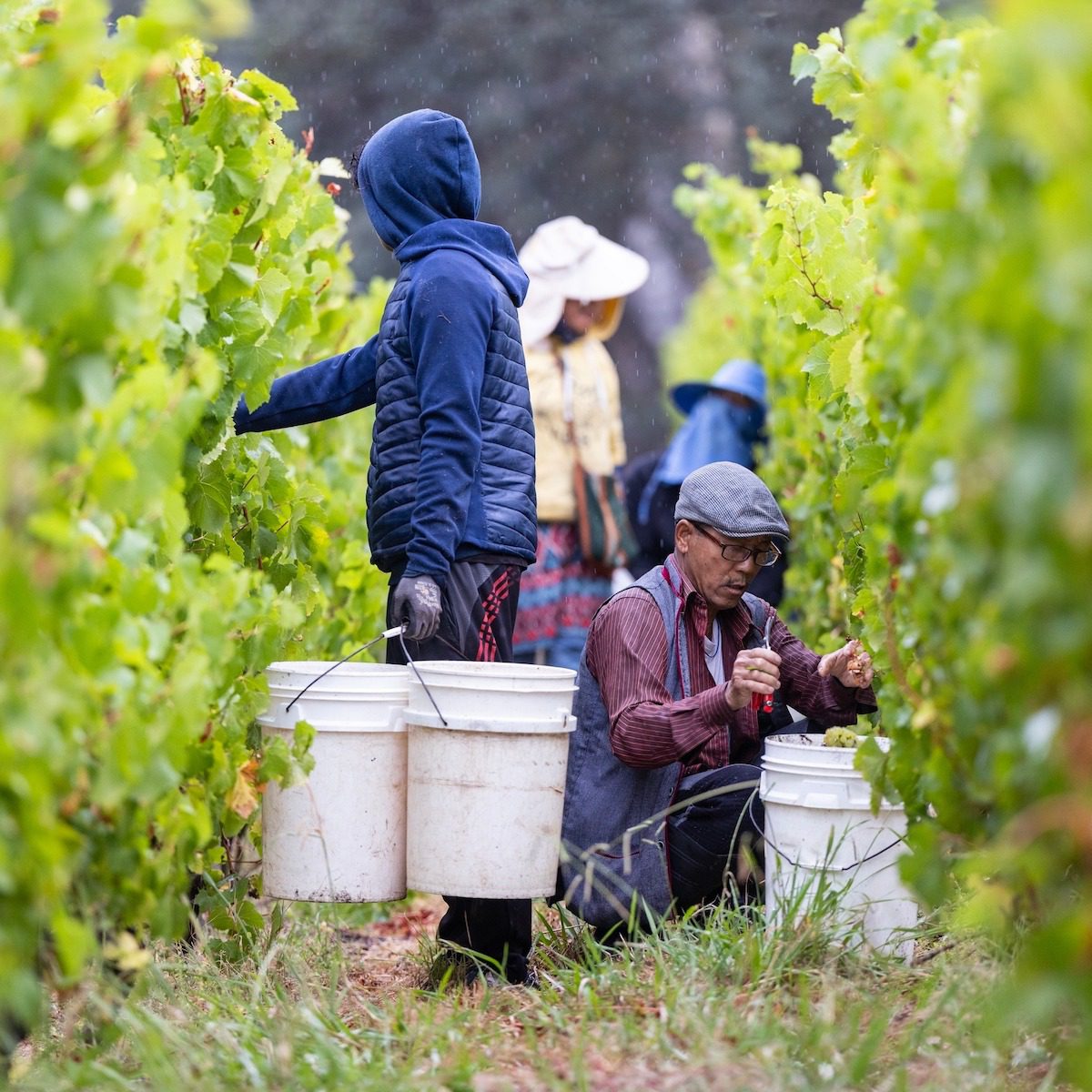
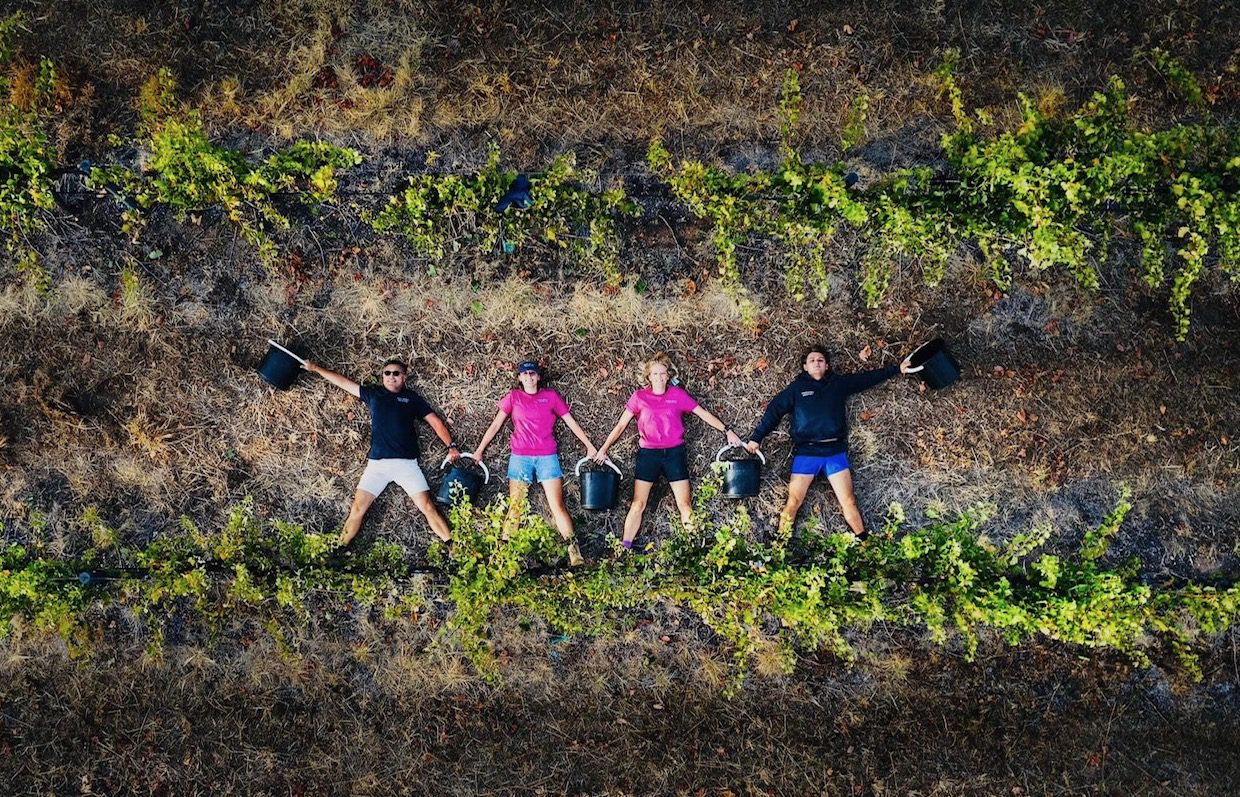
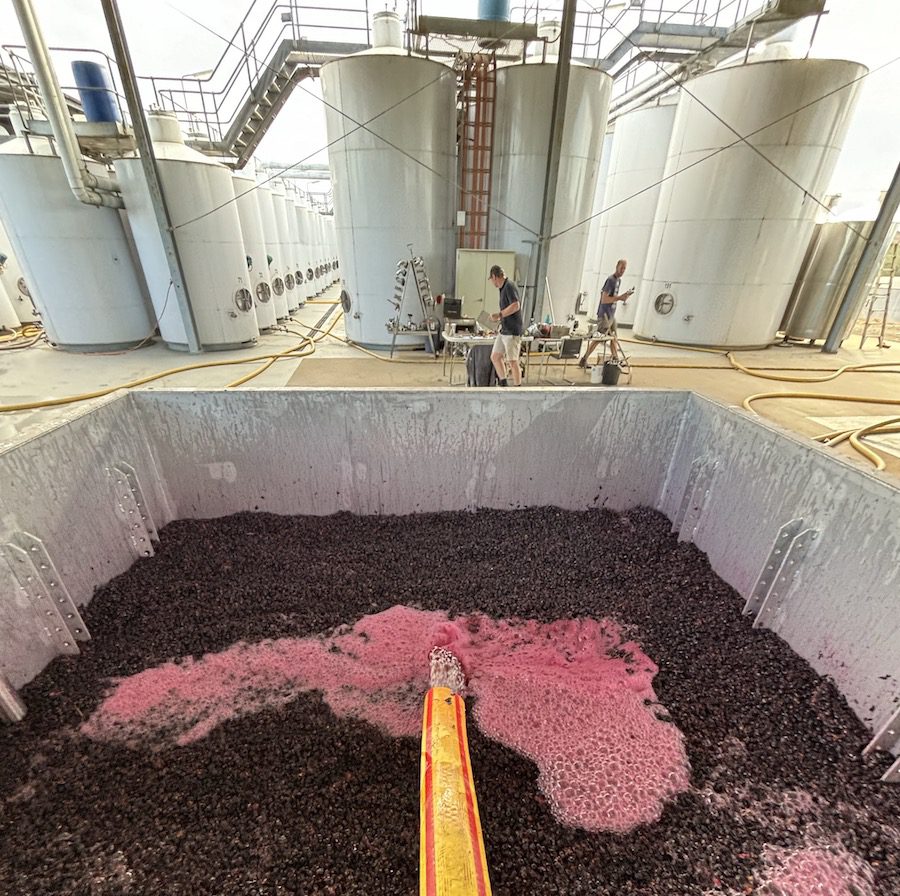
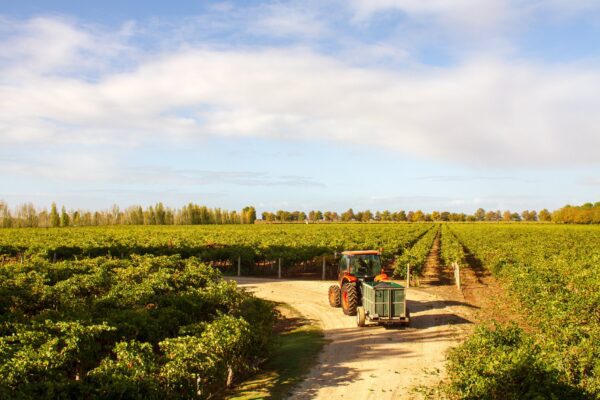
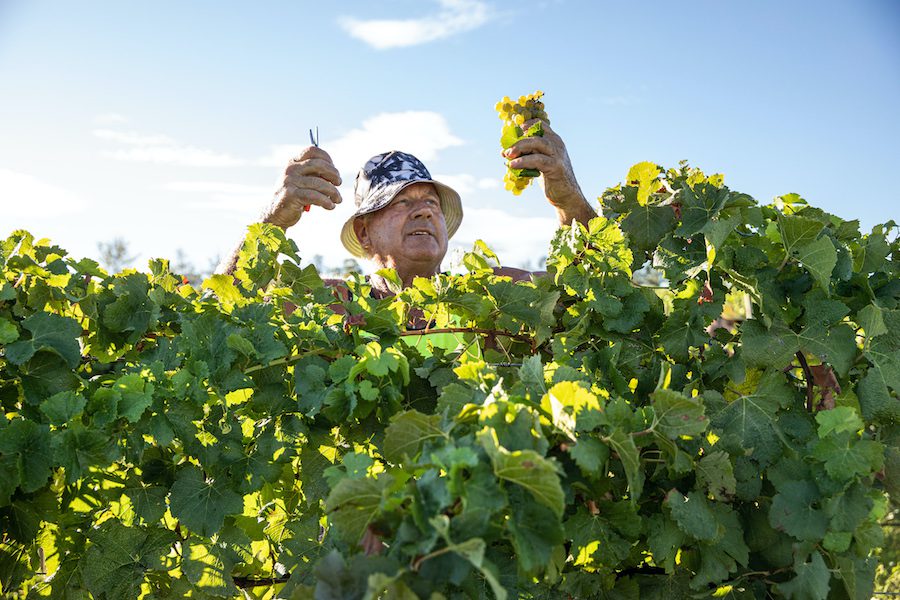
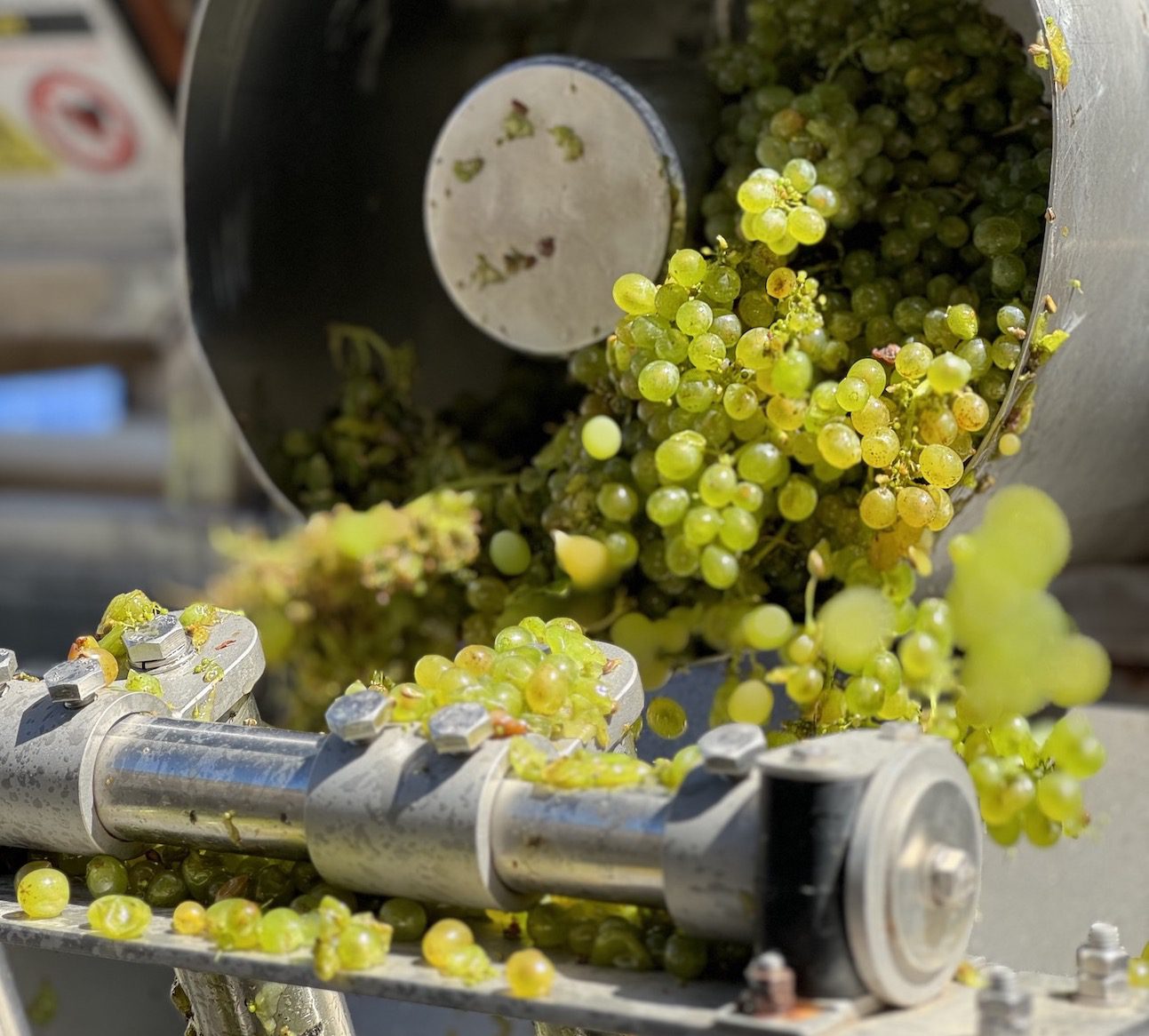
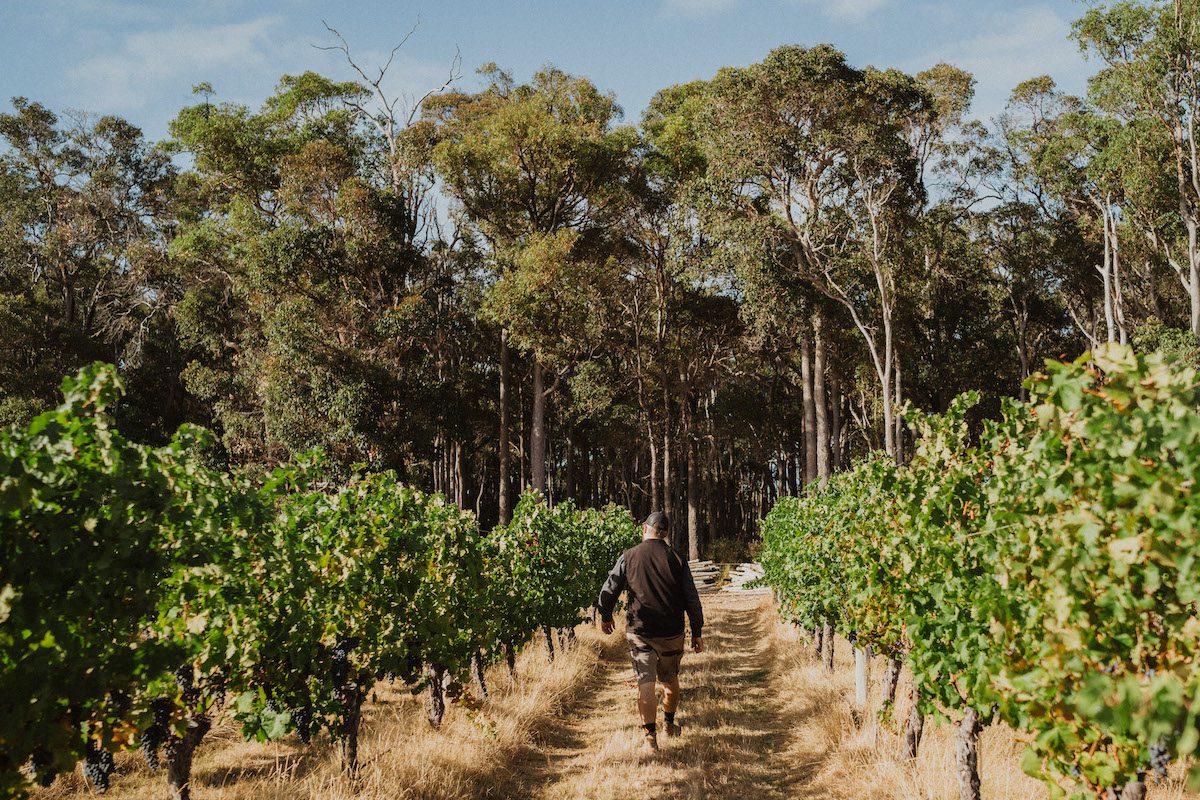
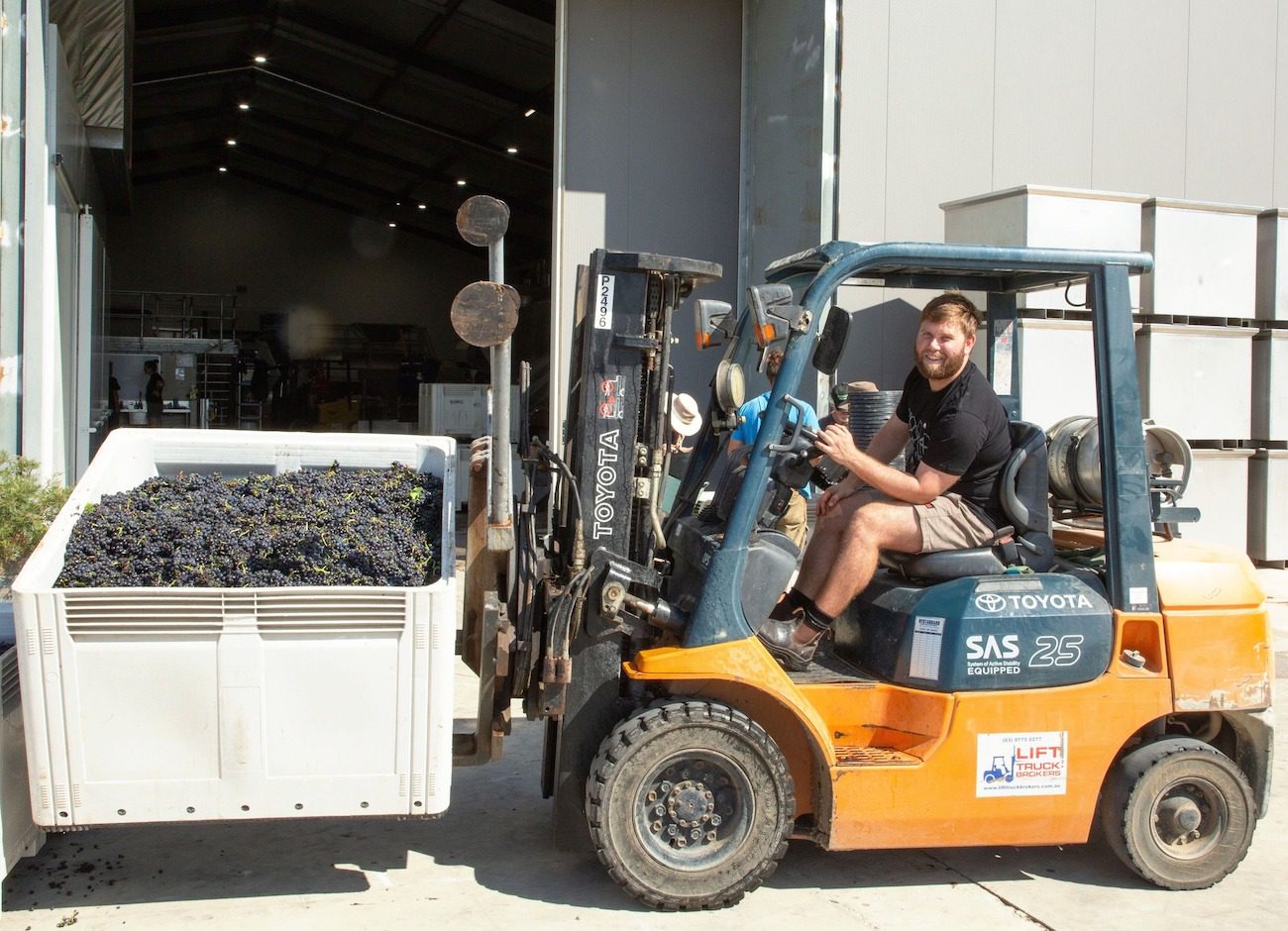 Mornington Peninsula
Mornington Peninsula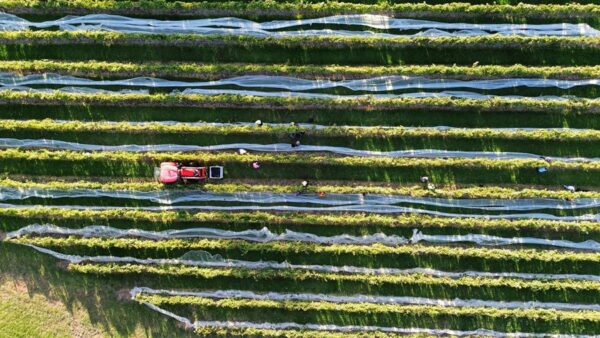





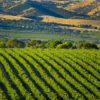





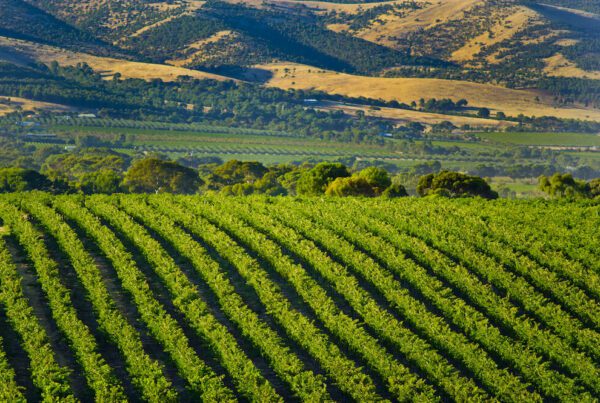
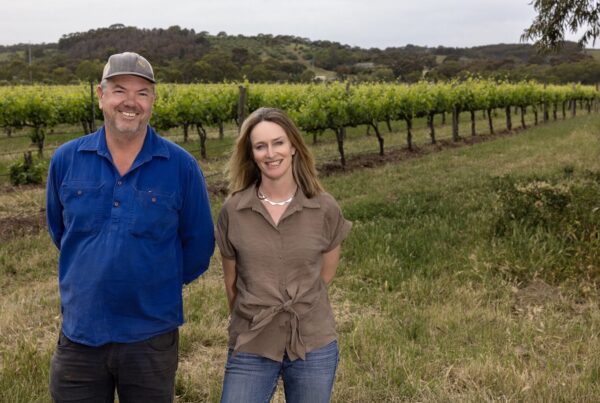
Recent Comments